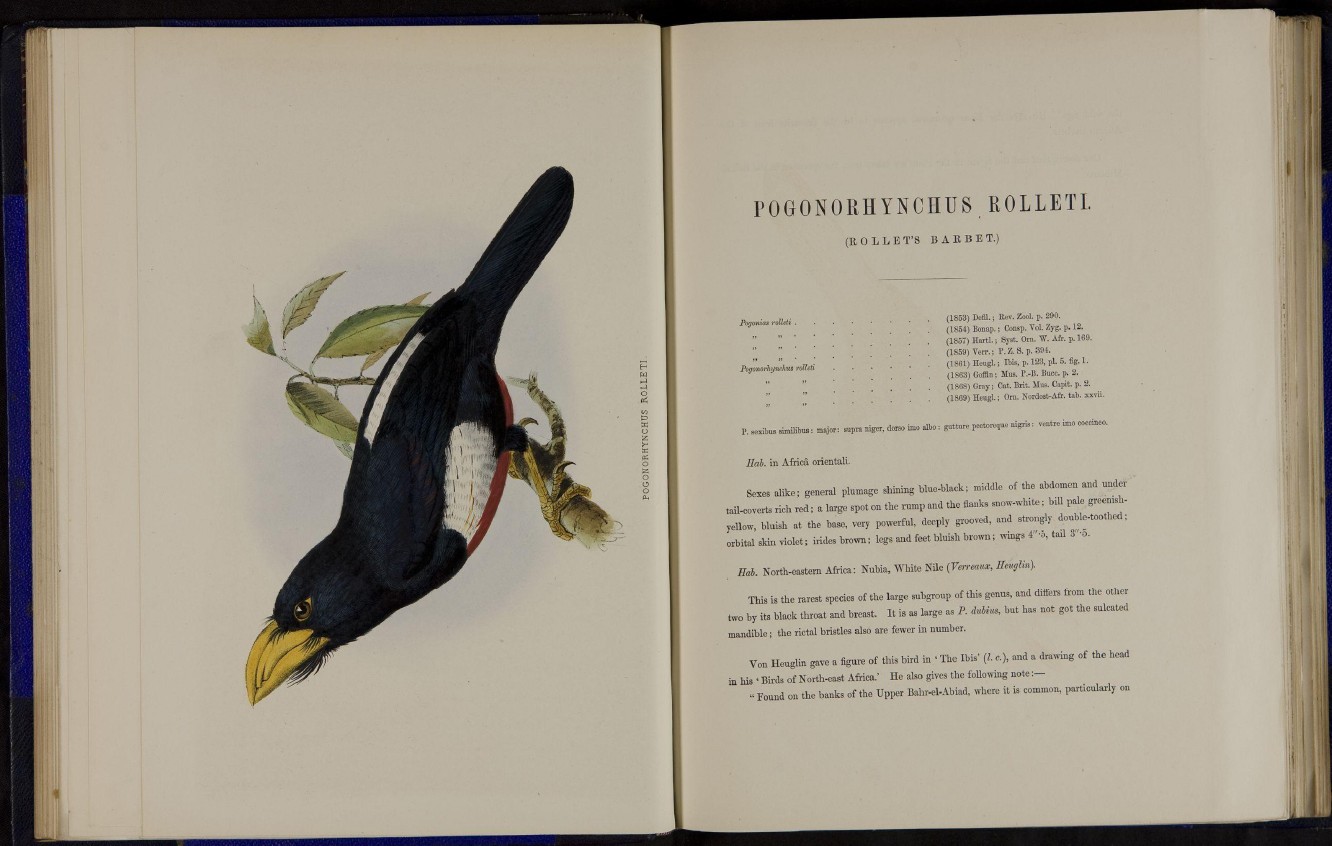
POGONORHYNCHUS ROLLETI.
( R O L L E T ' S B A R B E T .)
(1853) Defil.; Rev. Zool. p. 290.
(1854) Bonap.; Consp. Vol. Zyg. p. 12.
(1857) Hartl.; Syst. Orn. W. Afr. p. 169.
(1859) Verr.; P. Z. S. p. 394.
(1861) Heugl.; Ibis, p. 123, pi. 5. fig. 1.
(1863) Goffin ; Mus. P.-B. Bucc. p. 2.
(1868) Gray; Cat. Brit. Mus. Capit. p. 2.
(1869) Heugl.; Orn. Nordost-Afr. tab. xxvii.
Pogonias rolled
Pogonorhynchus rolled
P. sexibus 8imilibus : major: supra nigcr, dorso imo albo: gutture pectoreque nigris: ventre imo coccineo.
Hub. in Africa, orientali.
Sexes a l i k e ; general plumage shining blue-black; middle of the abdomen and under
tail-coverts rich r e d ; a large spot on t h e r u m p and t h e flanks snow-white; bill pale greenishyellow,
bluish at the base, very powerful, deeply grooved, and strongly double-toothed;
orbital skin violet; hides brown; legs and feet bluish brown; wings 4"'5, tail 3"*5.
Hab. North-eastern Africa: Nubia, White Nile (Verreaux, Heuglin).
This is the rarest species of the large subgroup of this genus, and differs from t h e other
two by its black throat and breast. It is as large as P. dubius, but has not got t h e sulcated
mandible; the rictal bristles also are fewer in number.
Von Heuglin gave a figure of this bird in ' The Ibis' (I. c), and a drawing of the head
in his ' Birds of North-east Africa.' He also gives t h e following n o t e :—
" Found on t h e banks of t h e Upper Bahr-el-Abiad, where it is common, particularly on